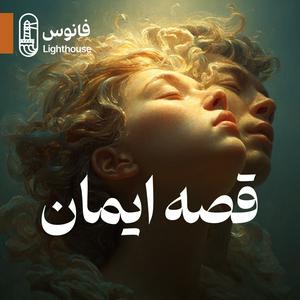اپیزود اول: چرا ایمان
اپیزود اول «داستان ایمان» شما را به نخستین جرقّههای پرسشگری بشر میبَرد؛ به شبی تاریک در دلِ غار که جرقّهٔ آتش روی دیوار میرقصد و تا روشنایی آزمایشگاههای fMRI امروز امتداد مییابد. در این قسمت سرِ نخِ ایمان را از روزگاری میگیریم که هنوز واژهای به نام «دین» وجود نداشت، امّا انسانِ شکارچیـگردآورنده با نقشی از «شیرِ انسانگون» یا خاک سرخی بر مزار عزیزانش، نشانهای از معنای فراتر میجست.
در خلال روایت، از سازوکار مغزیِ «HADD» و نظریهٔ ذهن میگوییم تا بفهمیم چرا مغز ما هر خشخشی را ارادهٔ یک عامل پنهان میپندارد و چگونه همین تمایل، بستر باور به ارواح و خدایان شد. ردِ مقدّس را در هیروفانیِ الیاده دنبال میکنیم؛ لحظهای که سنگی معمولی به دروازهای قدسی بدل میشود و زمان و مکان را دوپاره میکند. سپس پای دورکیم، بویر و دیگر اندیشمندان به میان میآید تا ببینیم آیینها چگونه «شور جمعی» میسازند و چرا دین، از احساس تا نهاد، به ساماندهندهٔ زندگی اجتماعی بدل شد.
این اپیزود دعوتی است به نشستن کنار آتشِ نخستین انسان و شنیدن طنین همان پرسشهای جاودان: آیا کسی آن بیرون هست؟ رنج چرا وجود دارد؟ و پس از مرگ چه میشود؟ آماده باشید تا مسیر هزاران سالهٔ این پرسشها را، از دیوارهای غار تا صفحهٔ مغزنگاری، گامبهگام با هم طی کنیم.
توسط دانیال کشانی
---
منابع
Barrett, J. L. (2012). Born Believers: The Science of Children’s Religious Belief. Free Press.
Bering, J. M., & Bjorklund, D. F. (2004). The natural emergence of reasoning about the afterlife. Developmental Psychology, 40(2), 217–233. https://psycnet.apa.org/record/2004-13328-002
Boyer, P. (2001). Religion Explained: The Evolutionary Origins of Religious Thought. Basic Books.
Corriveau, K. H., Chen, E. E., & Harris, P. L. (2014). Judgments about fact and fiction by children from religious and nonreligious backgrounds. Cognitive Science, 39(2), 353–382. https://onlinelibrary.wiley.com/doi/abs/10.1111/cogs.12138
Durkheim, É. (1912). The Elementary Forms of Religious Life (J. W. Swain, Trans.). George Allen & Unwin. https://archive.org/details/elementaryformso00durk
Eliade, M. (1957). The Sacred and the Profane: The Nature of Religion (W. R. Trask, Trans.). Harcourt, Brace & World. https://archive.org/details/sacredprofane00mirc
Gargett, R. H. (1999). Middle Palaeolithic burial is not a dead issue: The view from Qafzeh, Saint-Césaire, Kebara, Amud, and Dederiyeh. Journal of Human Evolution, 37(1), 27–90. https://www.sciencedirect.com/science/article/abs/pii/S0047248498902915
Johnson, D. (2015). God Is Watching You: How the Fear of God Makes Us Human. Oxford University Press. https://academic.oup.com/book/32140
Kelemen, D., & Rosset, E. (2009). The human function compunction: Teleological explanation in adults. Cognition, 111(1), 138–143. https://www.sciencedirect.com/science/article/abs/pii/S0010027708002237
Kind, C.-J., et al. (2014). The smile of the Lion Man: Recent excavations in Stadel Cave. Quartär, 61, 129–145. https://www.researchgate.net/publication/260127249_The_Smile_of_the_Lion_Man_Recent_Excavations_in_Stadel_Cave
Lewis-Williams, D. (2002). The Mind in the Cave: Consciousness and the Origins of Art. Thames & Hudson. https://books.google.com/books?id=gdU3AQAAIAAJ
Marx, K. (1843). Critique of Hegel’s Philosophy of Right. Deutsch-Französische Jahrbücher. https://www.marxists.org/archive/marx/works/1843/critique-hpr/intro.htm
Newberg, A., & Waldman, M. R. (2009). How God Changes Your Brain: Breakthrough Findings from a Leading Neuroscientist. Ballantine Books. https://books.google.com/books?id=3zY1S0T1Y2kC
Schmidt, K. (2010). Göbekli Tepe – The Stone Age sanctuaries. Archaeological Discovery. https://www.academia.edu/1327500/Gobekli_Tepe_The_Stone_Age_Sanctuaries
Tylor, E. B. (1871). Primitive Culture. John Murray. https://archive.org/details/primitiveculture01tylouoft
Weber, M. (1905). The Protestant Ethic and the Spirit of Capitalism (T. Parsons, Trans.). Routledge. https://archive.org/details/protestantethics00webe
Woolley, J. D., & Cox, V. (2007). Development of beliefs about storybook reality. Developmental Science, 10(5), 681–693. https://onlinelibrary.wiley.com/doi/abs/10.1111/j.1467-7687.2007.00612.x
Armstrong, K. (1993). A history of God: The 4,000-year quest of Judaism, Christianity, and Islam. Knopf.
McGrath, A. E. (2012). Historical theology: An introduction to Christian doctrine. Wiley-Blackwell.
Noll, M. A. (2002). The rise of evangelicalism: The age of Edwards, Whitefield and the Wesleys. InterVarsity Press.
Wilken, R. L. (2012). The first thousand years: A global history of Christianity. Yale University Press.
Brown, P. (2013). The rise of Western Christendom: Triumph and diversity, A.D. 200-1000 (10th anniversary ed.). Wiley-Blackwell.
Davies, N. (1996). Europe: A history. Oxford University Press.
MacCulloch, D. (2009). A history of Christianity: The first three thousand years. Penguin.
Pelikan, J. (1971). The Christian tradition: A history of the development of doctrine (Vol. 1: The emergence of the Catholic tradition, 100-600). University of Chicago Press.


